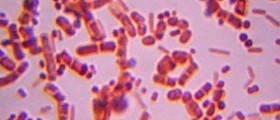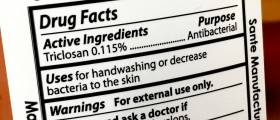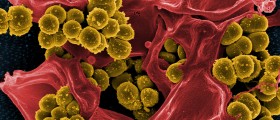
MRSA is an abbreviated form of methicillin-resistant Staphylococcus aureus. This bacterium causes numerous skin infections and many other types of infections inside the human body. The bacterium can be contracted through a contact with other contaminated people, inadequate health care conditions and during epidemics. In fact, about 19,000 individuals die each year due to exposure to this bacterium. However, during the past few years, many scientific breakthroughs in the field of medicine have lead to a decline of deaths for up to 35%, mostly due to preventive actions taken in hospitals and health centers.
Facts about MRSA
The S. aureus bacterium has been responsible for infections throughout the human history. MRSA is a relatively recent mutation of this organism, appearing for the first time in 1961. Before this occurrence, this bacteria was successfully kept at bay with antibiotic methicillin. However, MRSA has evolved and has undergone serious genetic mutations making its strains resistant to traditional treatment. Today, MRSA does not respond to treatments with penicillin, oxacillin and amoxicillin and some variants of the bacterium are even immune to tetracycline, erythromycin and clindamycin. Due to such high levels of drug resistance, MRSA is also referred to as superbug.
Manifestation of a MRSA Infection
MRSA bacteria are notorious for their ability to destroy the human tissue through their occasional and abrupt spread. MRSA attacks people with cuts, bruises, skin damage etc. Therefore, people who do not have these injuries may consider themselves more protected from this bacterium. Unfortunately, MRSA may be transferred through coughing, mucus, shared towels, personal belongings, clothing and all other items which might have been exposed to the infected individual. One in every 100 US citizens carry MRSA, not showing any symptoms whatsoever, transferring it around. MRSA infection may start manifesting through a reddish rash which resembles pimples or boils, evolving into a serious skin problem, producing pus and leading to severe inflammation.
Symptoms of MRSA
As it was mentioned above, MRSA may manifest through appearance of boils, cellulitis, abscesses, sty, carbuncles and impetigo. All these conditions predominantly affect the skin, leading to formation of openings, rashes and inflammation, potentially spreading to other organs in the human body.
When MRSA infection reaches this stage, more serious symptoms appear including low blood pressure, joint aches, headaches, breathing difficulties and numerous other symptoms demanding immediate medical assistance. Neglecting the signs and symptoms of a severe MRSA infection can lead to development of endocarditis, necrotizing fasciitis, osteomyelitis, sepsis and even death.

















Your thoughts on this
Loading...